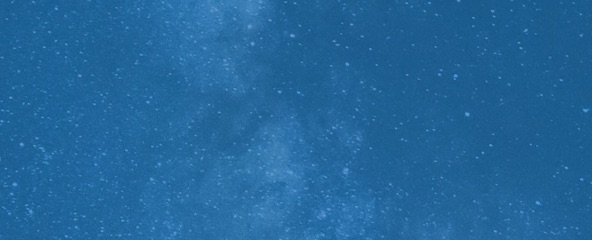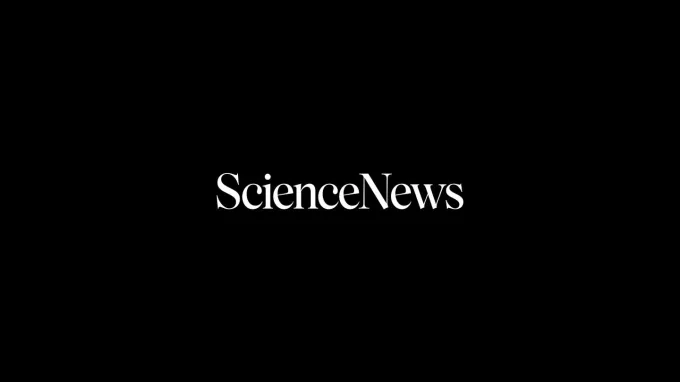Science News Magazine: Current Issue
Vol. 179 No. #2
Trustworthy journalism comes at a price.
Scientists and journalists share a core belief in questioning, observing and verifying to reach the truth. Science News reports on crucial research and discovery across science disciplines. We need your financial support to make it happen – every contribution makes a difference.
More Stories from the January 15, 2011 issue
-
 Health & Medicine
Health & MedicineNew blood test may predict some heart risk
People carrying high levels of a protein called cardiac troponin T are more likely to have heart failure or die from cardiovascular problems, two studies show.
By Nathan Seppa -
 Health & Medicine
Health & MedicineA protein’s ebb and flow
Buildup in the brain of a protein linked to Alzheimer's disease may be due to reduced clearance rather than overproduction of the protein.
-
 Chemistry
ChemistryLocks to learn
A new way to probe interactions between pairs of hairs could offer insights into fly-aways and other tonsorial woes.
-
 Life
LifeCells reprogrammed to treat diabetes
The testes may be an alternate source of insulin production.
-
 Life
LifeNew cellular ‘bones’ revealed
Proteins that make filaments may offer hints to how cellular scaffolding evolved.
-
 Health & Medicine
Health & MedicineSalvia says high
Laboratory researchers show that the psychoactive substance in a popular, largely legal recreational drug causes a short but intense period of hallucination.
-
 Life
LifeMice missing protein burn more fat
Research on the receptor for the 'hunger hormone' suggests a molecular strategy for revving up the body’s furnace.
-
 Earth
EarthGassy volcanoes tied to mass extinction
Chemicals from a massive Siberian eruption 250 million years ago may have polluted the atmosphere and killed off most life on the planet.
-
 Earth
EarthClimate action could save polar bears
Cutting fossil fuel emissions soon would retain enough sea ice habitat for threatened species, scientists say.
-
 Health & Medicine
Health & MedicineNo fear
A woman who lacks a basic brain structure, the amygdala, couldn’t be frightened no matter how hard researchers tried. And they tried.
-
 Chemistry
ChemistryHornet pigment drives solar cell in lab
Though far from photosynthetic, an insect's light-harvesting apparatus intrigues scientists.
-
 Space
SpaceCosmic reincarnation idea may be dead
Cosmological patterns that were recently put forth as evidence for a pre–Big Bang universe are easily explained by current theory, critics say.
By Ron Cowen -
 Animals
AnimalsFemale chimps play with ‘dolls’
Youngsters mimic mothering by cradling sticks, reigniting debate over sex differences in toy choices.
By Bruce Bower -
 Life
LifeGenes separate Africa’s elephant herds
Genetic work reveals forest and savanna pachyderms as distinct species.
-
 Life
LifeNeandertal relative bred with humans
Known only through DNA extracted from a scrap of bone, a Siberian hominid group suggests a much more complicated prehistory for Homo sapiens.
-

Science Future for January 15, 2011
January 22 Tweens work with engineers in Boise, Idaho, to design cities. See www.futurecityidaho.org January 26 Science historian Steven Shapin discusses ancient and modern concepts of food science, in New York City. Go to www.nyas.org January 26 Raise a glass to the science of cocktails at San Francisco’s Exploratorium fundraiser. Go to www.exploratorium.edu
By Science News -

The Discovery of Jeanne Baret by Glynis Ridley
The story of the first woman to sail around the globe — as “Jean Baret”— details her unheralded accomplishments as a botanist and explorer. The Discovery of Jeanne Baret by Glynis Ridley Crown, 2010, 288 p., $25.
By Science News -

The Darwinian Tourist: Viewing the World Through Evolutionary Eyes by Christopher Wills
A globe-trotting biologist explores how evolution has shaped today’s world, from Indonesian corals to Mongolian wolves. Includes more than 100 original photos. The Darwinian Tourist: Viewing the World Through Evolutionary Eyes by Christopher Wills Oxford Univ. Press, 2010, 345 p., $34.95.
By Science News -

The Nazi Symbiosis: Human Genetics and Politics in the Third Reich by Sheila Faith Weiss
A historian offers a detailed account of genetics research and its ethical ramifications under the Third Reich. The Nazi Symbiosis: Human Genetics and Politics in the Third Reich by Sheila Faith Weiss Univ. of Chicago Press, 2010, 383 p., $45.
By Science News -

Trailblazing Mars: NASA’s Next Giant Leap by Pat Duggins
A veteran space reporter examines hurdles to human exploration of the Red Planet. Trailblazing Mars: NASA’s Next Giant Leap by Pat Duggins Univ. Press of Florida, 2010, 242 p., $24.95.
By Science News -

Book Review: Here is a Human Being: At the Dawn of Personal Genomics by Misha Angrist
Review by Tina Hesman Saey.
By Science News -
 Health & Medicine
Health & MedicineThe Killer of Little Shepherds:
A True Crime Story and the Birth of Forensic Science by Douglas Starr.
-

White House science adviser discusses next two years
Just over a month after the midterm elections, President Obama’s science adviser took the podium in San Francisco at the American Geophysical Union meeting. John Holdren, a physicist and climate scientist, said the White House is making strides in improving the nation’s science and technology policies. Later that week, Holdren’s Office of Science and Technology […]
By John Holdren -

Young’uns adrift on the sea
Scientists try to identify and track elusive larvae in a boundless ocean.
By Susan Milius -

Physicists join immune fight
Principles beyond biology may help explain how the body battles infection.
By Susan Gaidos -

-

Letters
Another cell phone annoyance In response to “Why cell phone talkers are annoying” (SN: 10/9/10, p. 13), I contend that these researchers are only addressing half of the problem with their “halfalogue” hypothesis. Years ago, I was struck by how irritating it was to walk near people talking on cell phones and wondered if I […]
By Science News -

Science Past from issue of January 14, 1961
MAN-MADE DIAMONDS ONE-CARAT SIZE PRODUCED — Large, man-made diamonds, more than a carat in size, have been produced for the first time. The diamonds are dark in color and cannot now be used for industrial purposes because of structural imperfections. They were made at the General Electric Research Laboratory, Schenectady, N. Y., where the first […]
By Science News -

The Leafcutter Ants by Bert Hölldobler and E.O. Wilson
Two Pulitzer Prize–winning biologists team up to describe ants that farm their own food and form colonies that can be considered advanced civilizations. The Leafcutter Ants by Bert Hölldobler and E.O. Wilson W.W. Norton, 2010, 160 p., $19.95.
By Science News
